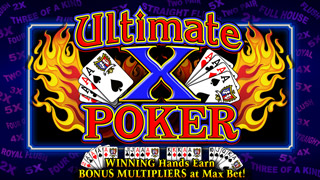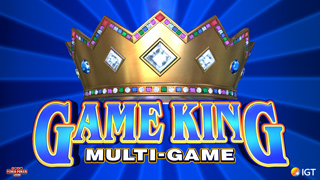Offer to Fa La La La La.... La la la la: Results (5th card flip)
-
oej719
- Video Poker Master
- Posts: 1777
- Joined: Wed Sep 06, 2006 5:46 pm
Re: Offer to Fa La La La La.... La la la la: Results (5th card flip)
That little voice in your head must be confusing you.
I know you have a GED and all, but really pianoboy don't mess with a man with some college. You can't win.
I know you have a GED and all, but really pianoboy don't mess with a man with some college. You can't win.
-
shadowman
- Video Poker Master
- Posts: 3587
- Joined: Mon Oct 23, 2006 5:42 pm
Ahhhh, what a coincidence. The dude is back. Just when RS has been deflated up pops his supporting cast. If this wasn't so obvious it might be humorous.
BTW, what you missed was the perfectly executed reverse psychology. How could RS not show up when I stated he wouldn't. Once he took the bait the rest was easy, just let the randomness of the machines prove he has been lying all along.
BTW, what you missed was the perfectly executed reverse psychology. How could RS not show up when I stated he wouldn't. Once he took the bait the rest was easy, just let the randomness of the machines prove he has been lying all along.
-
oej719
- Video Poker Master
- Posts: 1777
- Joined: Wed Sep 06, 2006 5:46 pm
Not much of a supporting cast though. Only 1 piano playing high school boy with a loose tongue and lonely too.
-
cddenver
- Video Poker Master
- Posts: 2269
- Joined: Tue Mar 13, 2007 9:54 pm
I have no clue what Rob will do next. I expect you will know before I do. You and others here seem obsessed with his every move. Hmmm. If you all say he is full of crap...WHY EVEN BOTHER!!! He doesn't need to try to get your attention...HE ALREADY HAS IT!!! If you feel you have wasted your time...THEN YOU ARE TO BLAME!!!
Oh, it's a given that he gets our attention, but that's not the kind of attention I meant. There are always newbies just getting into VP, and also experienced players just getting into online discussions. We always have some repetition of various topics like randomness, taxes, paytables - it's easier to repost a few lines than to look up a previous link. That's done for the benefit of any new members who have joined since the last mention of any particular subject, and no one seems to mind the occasional repetition. If the site membership was never-changing and we knew the members had been around long enough to have seen the results of previous go-rounds on Rob's views we certainly wouldn't bother giving each new theory that kind of attention. That would just be preaching to the choir, and we'd probably just post a couple of same-old, same-old messages and that would be the end of it. That's why we stay current on Rob - it's not personal, just business. Well, ok, for one of us it's personal.
The only alternative to wasting time on these wild-goose chases is to accept these theories without question. So I guess there really isn't any alternative.
You all get and READ his newsletters. You discuss and refute every claim he makes mockingly. The most popular posts on this site all have to do with him.
Sheesh - it wasn't too long ago that he announced that he was taking steps to remove access to his site and e-letters for known critics. We just can't win for losing. How else are we to stay current on his views, other than his site articles, e-letters, and the occasional video? Most of his theories don't merit serious consideration, so they don't get it.
Why were you even concerned that his testing had any validity at all? Seems like alot of numerical crunching exercises to me.
Excuse me? For the last six months or so the "flip" experiment has been his #1 topic. The Big Kahuna for him as far as keeping his name active online. The recent test was the first opportunity to check his claim with some objectivity.
In some of his e-letters he's mentioned results of some short sessions, so I really don't see what the problem is with this particular test.
The way you argue here in snippets and mini-quotes is pointless. You take tiny parts of the post and comment condescendingly without regard to the overall message. It's like an "I Gotcha" game...
Sorry. You write longer posts with (usually) several things I want to comment on, and there's a lot of fluff that I don't think needs quoting. I like this style more than just quoting your post in total, and I try to focus on salient points. If you think I'm misrepresenting anything you say by quoting "snippets" let me know.
In whatever way this latest fiasco finally turns out...I'll find out about it in a couple of months when I have such a boring day that I re-visit this site.
Thanks for coming by today, and we're already looking forward to the next visit.
-
oej719
- Video Poker Master
- Posts: 1777
- Joined: Wed Sep 06, 2006 5:46 pm
I thought he was dead.
-
MikeA
- Video Poker Master
- Posts: 1615
- Joined: Tue Oct 24, 2006 3:50 pm
Something seems odd about the comments I've read here concerning the "5th card flip" experiment that I cannot reconcile. And maybe I have misunderstood comments reference has been made to from the "Rob Camp".
I do seem to recall that "short term" was a criteria in the strategy that RS promotes that makes contradiction to the probabilities possible. Yet, I get the impression that the results of the "Flip" test were somewhat discounted because the session was "too short?"
I find that a bit ironic because the Mathists in our number here do go by the premise that in order for the averages to be meaningful, many independent trials must be experienced.
Ahhh well. I've probably not understood the background correctly.
I do seem to recall that "short term" was a criteria in the strategy that RS promotes that makes contradiction to the probabilities possible. Yet, I get the impression that the results of the "Flip" test were somewhat discounted because the session was "too short?"
I find that a bit ironic because the Mathists in our number here do go by the premise that in order for the averages to be meaningful, many independent trials must be experienced.
Ahhh well. I've probably not understood the background correctly.
-
oej719
- Video Poker Master
- Posts: 1777
- Joined: Wed Sep 06, 2006 5:46 pm
Good point MikeA.
A hustler like him will spin everything to make himself look correct. But it does just the opposite, it proves him wrong.
A hustler like him will spin everything to make himself look correct. But it does just the opposite, it proves him wrong.
-
royal flush
- Video Poker Master
- Posts: 1116
- Joined: Fri Nov 10, 2006 12:50 pm
rob and all of his "supporters" ( other screen names) dont understand math as vp is all about math and expected value. the hit and run ideas are just for suckers. the only good hustlers on this site are folks that were exploiting the "banking bonus" games they help us all think outside the box and expoit casino miscues
-
New2vp
- Video Poker Master
- Posts: 1879
- Joined: Mon Sep 11, 2006 4:02 am
-
New2vp
- Video Poker Master
- Posts: 1879
- Joined: Mon Sep 11, 2006 4:02 am
new2vp that number of your odds seems a little low to me. I'm not actually calculating anything but are you sure you got the right number of zeros on there? Is there any easy way to do a graph or something that would show a distribution curve for 40% and 6% results over 180 repetitions? That might help me understand it more.While I think you are right that the chances might be very low, this seems a little too too low. But I'm not basing that on anything but intuition.
The graph is in the previous message. There is no magic here except that an underlying population percentage rate of 6% generally produces samples that are near 6% and not near 40%. And an underlying population percentage of 40% produces samples near 40%. Although it is true that there will be sampling error and we might not be able to actually detect differences between say 6% and 10% with a sample of size 180, sampling error cannot account for the results in the Webman-Fa La La La La.... La la la la exercise without believing that this was a total fluke that would occur with the astronomical odds that I quoted earlier.Although your intuition might tell you that something like this might happen, the study of probability and statistics allows you to quantify things in such a way as to give you more informed intuition in future conjectures.The graphs simply show the probabilities of getting x successes in 180 independent trials, exactly what the binomial distribution is designed to produce. You can find these values yourself with an Excel spreadsheet by entering in "=BINOMDIST(x,180,0.06,0)" and "=BINOMDIST(x,180,0.40,0)" for whatever value of x that you want between 0 and 180. The first formula will give you the likelihood of getting say 11 successes (if you substitute 11 for x) if the true probability of a flipover is 6%; the second will give you the probability of only 11 successes if the flipover rate is 40%. The large odds that I quoted previously were derived by adding up all the probabilities from 0 to 11 if the true flipover rate was 40%. To convert a probability to the odds of an event occuring, you can use the equation:Odds = (1 - Probability) / ProbabilityYou can then say the odds of an event with probability p happening is (1 - p) / p to 1.In statistics, if you wish to use real world samples to test a hypothesis, you run an experiment and then see how likely it is that such a result would occur under the assumptions in your hypothesis. Typically, if the probability is less than 5%, you reject the assumptions in your hypothesis. Of course, sometimes bad luck occurs and you make mistakes because your experiment was one of those 1 in 20 flukes. Here the probability was 1.76 x 10^(-25). It's pretty difficult to say this was anything but testing an incorrect assumption.If you were to rerun the sample of 180 a hundred times and graph the result AND the true flipover rate was 6%, you would see results close to the dark blue somewhat "bell-shaped" graph. The actual numbers might range between 4 and 18, with some small variance.If the true flipover rate was 40%, you would see results close to the pink graph, with numbers ranging between say 56 and 86. You would not see 11, just like I will not see 3 consecutive dealt spade royal flushes in my lifetime (so far, I've never even had 1 in a row).There may be many other explanations for what happened...like there was never any discrepancy with non-random flipovers in the first place, but the science of statistics allows us to rule out the face-saving reason being proposed of too small of a sample. There is not a 40%+ flipover rate....unless Webman conspired with the programmers of the machines that were used. Yeah, that's probably it.

























































